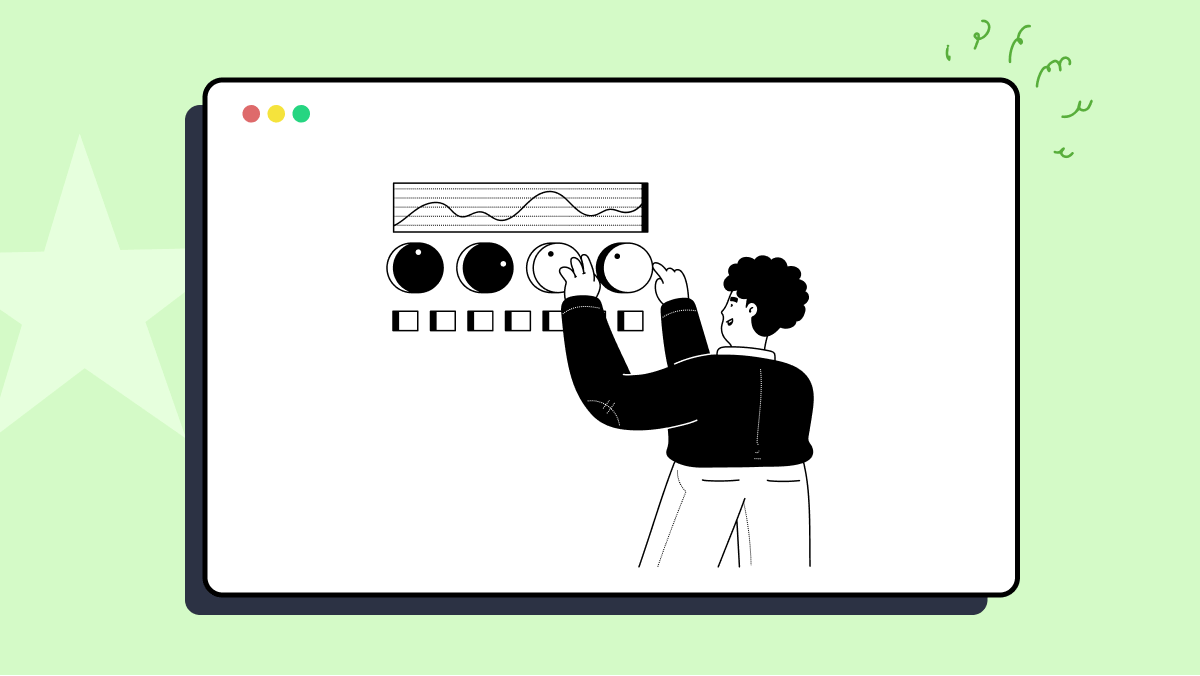How to use FloatArrayAssert_startsWith_with_Float_array_Test class of org.assertj.core.api.floatarray package
Best Assertj code snippet using org.assertj.core.api.floatarray.FloatArrayAssert_startsWith_with_Float_array_Test
...25 * Tests for <code>{@link FloatArrayAssert#startsWith(Float[])}</code>.26 *27 * @author Omar Morales Ortega28 */29class FloatArrayAssert_startsWith_with_Float_array_Test extends FloatArrayAssertBaseTest {30 @Test31 void should_fail_if_values_is_null() {32 // GIVEN33 Float[] sequence = null;34 // WHEN35 Throwable thrown = catchThrowable(() -> assertions.startsWith(sequence));36 // THEN37 then(thrown).isInstanceOf(NullPointerException.class)38 .hasMessage(shouldNotBeNull("sequence").create());39 }40 @Test41 void should_pass_if_values_are_in_range_of_precision() {42 // GIVEN43 Float[] values = new Float[] { 1.009f, 1.999f };...FloatArrayAssert_startsWith_with_Float_array_Test
Using AI Code Generation
1package org.assertj.core.api.floatarray;2import org.assertj.core.api.FloatArrayAssert;3import org.assertj.core.api.FloatArrayAssertBaseTest;4import org.junit.jupiter.api.DisplayName;5import org.junit.jupiter.api.Test;6import static org.mockito.Mockito.verify;FloatArrayAssert_startsWith_with_Float_array_Test
Using AI Code Generation
1package org.assertj.core.api.floatarray;2import static org.assertj.core.api.Assertions.assertThat;3import static org.assertj.core.util.FailureMessages.actualIsNull;4import org.assertj.core.api.FloatArrayAssertBaseTest;5import org.junit.Test;6public class FloatArrayAssert_startsWith_with_Float_array_Test extends FloatArrayAssertBaseTest {7 protected FloatArrayAssert invoke_api_method() {8 return assertions.startsWith(6f, 8f);9 }10 protected void verify_internal_effects() {11 assertThat(getArrays(assertions)).startsWith(6f, 8f);12 }13 public void should_fail_if_actual_is_null() {14 thrown.expectAssertionError(actualIsNull());15 assertThat((float[]) null).startsWith(8f);16 }17 public void should_fail_if_sequence_is_null() {18 thrown.expectNullPointerException("The given float array should not be null");19 assertThat(new float[] { 1f, 2f, 3f }).startsWith((float[]) null);20 }21 public void should_fail_if_sequence_is_empty() {22 thrown.expectIllegalArgumentException("The given float array should not be empty");23 assertThat(new float[] { 1f, 2f, 3f }).startsWith();24 }25}26package org.assertj.core.api.floatarray;27import static org.assertj.core.api.Assertions.assertThat;28import static org.assertj.core.util.FailureMessages.actualIsNull;29import org.assertj.core.api.FloatArrayAssertBaseTest;30import org.junit.Test;31public class FloatArrayAssert_startsWith_with_Float_array_Test extends FloatArrayAssertBaseTest {32 protected FloatArrayAssert invoke_api_method() {33 return assertions.startsWith(6f, 8f);34 }35 protected void verify_internal_effects() {36 assertThat(getArrays(assertions)).startsWith(6f, 8f);37 }38 public void should_fail_if_actual_is_null() {39 thrown.expectAssertionError(actualIsNull());40 assertThat((float[]) null).startsWith(8f);41 }42 public void should_fail_if_sequence_is_null() {43 thrown.expectNullPointerException("The given float array should not be null");44 assertThat(new float[] { 1f, 2f, 3f }).startsWith((float[]) null);FloatArrayAssert_startsWith_with_Float_array_Test
Using AI Code Generation
1package org.assertj.core.api.floatarray;2import org.assertj.core.api.FloatArrayAssert;3import org.assertj.core.api.FloatArrayAssertBaseTest;4import static org.mockito.Mockito.verify;5public class FloatArrayAssert_startsWith_with_Float_array_Test extends FloatArrayAssertBaseTest {6 protected FloatArrayAssert invoke_api_method() {7 return assertions.startsWith(6f, 8f);8 }9 protected void verify_internal_effects() {10 verify(arrays).assertStartsWith(getInfo(assertions), getActual(assertions), 6f, 8f);11 }12}13package org.assertj.core.api.floatarray;14import org.assertj.core.api.FloatArrayAssert;15import org.assertj.core.api.FloatArrayAssertBaseTest;16import static org.mockito.Mockito.verify;17public class FloatArrayAssert_startsWith_with_Float_array_Test extends FloatArrayAssertBaseTest {18 protected FloatArrayAssert invoke_api_method() {19 return assertions.startsWith(6f, 8f);20 }21 protected void verify_internal_effects() {22 verify(arrays).assertStartsWith(getInfo(assertions), getActual(assertions), 6f, 8f);23 }24}25package org.assertj.core.api.floatarray;26import org.assertj.core.api.FloatArrayAssert;27import org.assertj.core.api.FloatArrayAssertBaseTest;28import static org.mockito.Mockito.verify;29public class FloatArrayAssert_startsWith_with_Float_array_Test extends FloatArrayAssertBaseTest {30 protected FloatArrayAssert invoke_api_method() {31 return assertions.startsWith(6f, 8f);32 }33 protected void verify_internal_effects() {34 verify(arrays).assertStartsWith(getInfo(assertions), getActual(assertions), 6f, 8f);35 }36}37package org.assertj.core.api.floatarray;38import org.assertj.core.api.FloatArrayAssert;39import org.assertj.core.api.FloatArrayAssertBaseTest;40import static org.mockito.MockitoFloatArrayAssert_startsWith_with_Float_array_Test
Using AI Code Generation
1public class FloatArrayAssert_startsWith_with_Float_array_Test {2 public void test_startsWith_with_Float_array() {3 assertThat(new float[] { 1.0f, 2.0f, 3.0f }).startsWith(new float[] { 1.0f, 2.0f });4 }5}6package org.assertj.core.api.floatarray;7import static org.assertj.core.api.Assertions.assertThat;8import org.junit.Test;9public class FloatArrayAssert_startsWith_with_Float_array_Test {10 public void test_startsWith_with_Float_array() {11 assertThat(new float[] { 1.0f, 2.0f, 3.0f }).startsWith(new float[] { 1.0f, 2.0f });12 }13}14package org.assertj.generator.api;15import static org.assertj.generator.api.AssertionsGeneratorUtil.*;16import java.io.IOException;17import java.lang.reflect.Method;18import java.util.ArrayList;19import java.util.Arrays;20import java.util.List;21import org.assertj.core.api.AbstractAssert;22import org.assertj.core.api.Assertions;23import org.assertj.core.api.ObjectAssert;24import org.assertj.core.api.ObjectArrayAssert;25import org.assertj.core.api.ObjectAssert;FloatArrayAssert_startsWith_with_Float_array_Test
Using AI Code Generation
1import org.assertj.core.api.FloatArrayAssert;2import org.assertj.core.api.FloatArrayAssertBaseTest;3import org.junit.Test;4import static org.mockito.Mockito.verify;5public class FloatArrayAssert_startsWith_with_Float_array_Test extends FloatArrayAssertBaseTest {6 private final float[] expected = { 1.0f, 2.0f };7 protected FloatArrayAssert invoke_api_method() {8 return assertions.startsWith(expected);9 }10 protected void verify_internal_effects() {11 verify(arrays).assertStartsWith(getInfo(assertions), getActual(assertions), expected);12 }13}Blogs
Check out the latest blogs from LambdaTest on this topic:
The purpose of developing test cases is to ensure the application functions as expected for the customer. Test cases provide basic application documentation for every function, feature, and integrated connection. Test case development often detects defects in the design or missing requirements early in the development process. Additionally, well-written test cases provide internal documentation for all application processing. Test case development is an important part of determining software quality and keeping defects away from customers.
So you are at the beginning of 2020 and probably have committed a new year resolution as a tester to take a leap from Manual Testing To Automation . However, to automate your test scripts you need to get your hands dirty on a programming language and that is where you are stuck! Or you are already proficient in automation testing through a single programming language and are thinking about venturing into new programming languages for automation testing, along with their respective frameworks. You are bound to be confused about picking your next milestone. After all, there are numerous programming languages to choose from.
The QA testing career includes following an often long, winding road filled with fun, chaos, challenges, and complexity. Financially, the spectrum is broad and influenced by location, company type, company size, and the QA tester’s experience level. QA testing is a profitable, enjoyable, and thriving career choice.
Automating testing is a crucial step in the development pipeline of a software product. In an agile development environment, where there is continuous development, deployment, and maintenance of software products, automation testing ensures that the end software products delivered are error-free.
Automation Testing Tutorials
Learn to execute automation testing from scratch with LambdaTest Learning Hub. Right from setting up the prerequisites to run your first automation test, to following best practices and diving deeper into advanced test scenarios. LambdaTest Learning Hubs compile a list of step-by-step guides to help you be proficient with different test automation frameworks i.e. Selenium, Cypress, TestNG etc.
LambdaTest Learning Hubs:
- JUnit Tutorial
- TestNG Tutorial
- Webdriver Tutorial
- WebDriverIO Tutorial
- Protractor Tutorial
- Selenium 4 Tutorial
- Jenkins Tutorial
- NUnit Tutorial
- Jest Tutorial
- Playwright Tutorial
- Cypress Tutorial
- PyTest Tutorial
YouTube
You could also refer to video tutorials over LambdaTest YouTube channel to get step by step demonstration from industry experts.
Most used methods in FloatArrayAssert_startsWith_with_Float_array_Test
Try LambdaTest Now !!
Get 100 minutes of automation test minutes FREE!!




